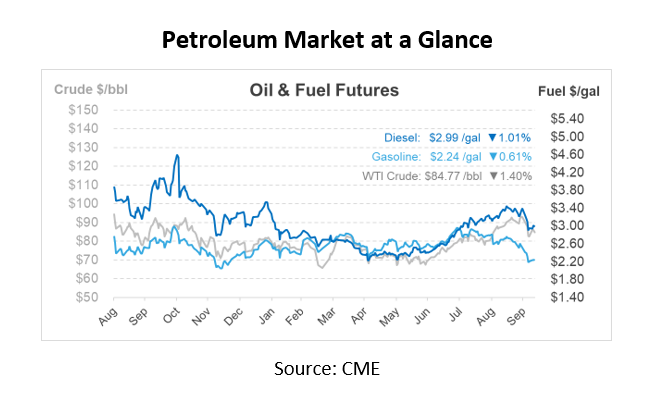
What Is It – Environmental Protection Agency (EPA)
Many of us have heard of the Environmental Protection Agency as it relates to the regulations and resources set in place to protect our earth. Today’s What Is It Wednesday will be explaining the workings and roles of the EPA’s key concepts, shedding light on their significance in our industry. Join us as we explore its history, mandates, and the roles it assumes in the oil and gas industry.
What is the EPA?
The Environmental Protection Agency (EPA) is an agency of the U.S. federal government whose mission is to protect human health and the environment. Established in 1970 under President Richard Nixon, the EPA is responsible for enforcing regulations passed by Congress that relate to environmental issues.
The EPA plays a crucial role in safeguarding the environment and public health in the United States. One of its primary responsibilities is the setting and enforcement of environmental standards. These standards, grounded in scientific research, relate to the quality of air, water, and land. After these standards are put into place, the EPA has the authority to enforce them, frequently working in conjunction with state and local governments.
Another key function of the EPA is research. The agency delves into environmental issues, developing solutions and refining policy recommendations through its investigations. In addition to research, the EPA offers financial support in the form of grants. These grants are channeled towards furthering research, promoting environmental education, and aiding in the cleanup of hazardous waste sites.
Education and outreach are also fundamental to the EPA’s mission. The agency ensures that the public remains informed about various environmental concerns. It also provides guidance on how individuals can minimize their environmental impact. Regulation, too, falls under the purview of the EPA. By crafting and enforcing regulations, the agency aims to curb pollution. These regulations might target a range of entities, from industries and municipalities to specific products.
Beyond these measures, the EPA is continually monitoring and assessing the state of the environment. This proactive approach allows them to identify and tackle new environmental threats as they arise. Cleanup initiatives, especially in areas contaminated by hazardous waste, are another significant focus.
How the EPA Comes into Play with the Petroleum Industry
The EPA plays a significant role in regulating and monitoring the petroleum industry in the United States. This is due to the environmental impacts associated with petroleum extraction, refining, distribution, and consumption. Here’s how the EPA’s oversight and regulations intersect with the petroleum industry:
Air Quality: Petroleum refineries and transportation are major sources of air pollutants, including volatile organic compounds (VOCs), nitrogen oxides (NOx), sulfur dioxide (SO2), and particulate matter. The EPA sets and enforces emissions standards for these pollutants under the Clean Air Act.
Water Quality: The extraction, refining, and transportation of petroleum can lead to water contamination. The EPA enforces standards to protect surface water and groundwater under the Clean Water Act. For instance, the agency regulates stormwater discharges from oil facilities and mandates that these facilities have spill prevention and response plans.
Hazardous Waste: The refining process can generate hazardous wastes. Under the Resource Conservation and Recovery Act (RCRA), the EPA ensures the proper management and disposal of these wastes.
Underground Storage Tanks (USTs): Many petroleum products, like gasoline, are stored in underground tanks. Leaks from these tanks can contaminate groundwater. The EPA has established regulations to ensure that these tanks are properly installed, maintained, and, when necessary, removed.
Oil Spill Prevention and Response: Under the Oil Pollution Act (OPA) and the Clean Water Act, the EPA establishes regulations to prevent oil spills from facilities and vessels and to ensure that operators have plans in place to respond to large discharges of oil.
Greenhouse Gas Emissions: The combustion of petroleum products contributes significantly to greenhouse gas emissions, primarily CO2. The EPA monitors and regulates these emissions, especially from large stationary sources like refineries.
Fuel Standards: The EPA sets standards for the composition of gasoline and diesel to reduce harmful emissions from vehicles. For instance, the agency has limits on the amount of sulfur in gasoline and diesel fuel. The Renewable Fuel Standard (RFS) program, implemented by the EPA, also requires a certain volume of renewable fuel to replace or reduce the quantity of petroleum-based transportation fuel.
Toxic Release Inventory (TRI): Petroleum facilities are required to report releases of specific toxic chemicals to the environment, facilitating public knowledge and understanding of chemical risks in communities.
Risk Management: The EPA requires many petroleum facilities to develop a Risk Management Plan (RMP) to detect and prevent or minimize the effects of catastrophic releases of toxic substances.
EPA’s Role in Enforcing Laws
The EPA plays a crucial role in safeguarding communities and the natural environment by enforcing vital legislation, including the Clean Air Act, Safe Drinking Water Act, National Environmental Education Act, and Clean Water Act. Some of these laws were in place even before the establishment of the EPA.
Beyond upholding these laws, the EPA oversees the detection of environmental offenses, supervises pollution levels, and delineates standards for managing hazardous chemicals and waste. If breaches of these laws are detected, the EPA steps in to investigate and take necessary action against the culprits.
There are two primary classifications of environmental offenses: civil and criminal. Penalties vary based on the nature of the offense. Those found guilty of civil violations may face monetary penalties or be required to rectify the environmental harm caused. Meanwhile, criminal violators can be subjected to financial sanctions or even imprisonment.

This article is part of Daily Market News & Insights
MARKET CONDITION REPORT - DISCLAIMER
The information contained herein is derived from sources believed to be reliable; however, this information is not guaranteed as to its accuracy or completeness. Furthermore, no responsibility is assumed for use of this material and no express or implied warranties or guarantees are made. This material and any view or comment expressed herein are provided for informational purposes only and should not be construed in any way as an inducement or recommendation to buy or sell products, commodity futures or options contracts.





